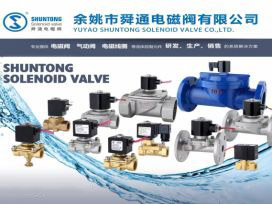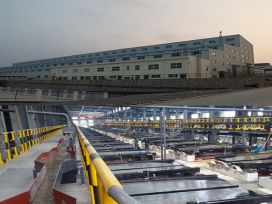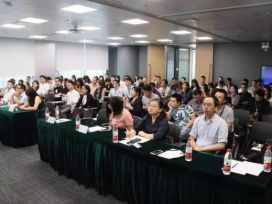Industrial products are polluted by various liquid and solid pollutants during production, use and storage. Industrial cleaning is to remove these pollutants through physical, chemical and mechanical means to make industrial products obtain a certain degree of cleanliness.
1 Cleaning technology
1.1 Chemical cleaning and physical cleaning.
At present, chemical cleaning is the main method of domestic cleaning, supplemented by physical cleaning. However, physical cleaning is gradually replacing chemical cleaning and becoming the mainstream of industrial cleaning due to its advantages of low pollution, flexible operation and no corrosion. Chemical cleaning is a method of removing dirt from the surface of equipment workpieces using one or several chemical agents (or their aqueous solutions). It uses cleaning agents to chemically transform, dissolve and peel off pollutants or covering layers on the surface of objects to achieve the effects of oil removal, rust removal, scale removal and decontamination. Physical cleaning uses various mechanical external forces and energy to crush, decompose and peel off dirt from the surface of objects to achieve the cleaning effect. In physical cleaning, water jet cleaning occupies a dominant position and is showing a rapid development trend. Pollution-free physical cleaning technologies such as PIG cleaning, dry ice cleaning and ultrasonic cleaning are being rapidly promoted and applied.
1.2 The significance of industrial cleaning
The cleaning industry has emerged and developed with the process of industrialization and modernization and the needs of social production. All industrial sectors have some form of cleaning, but different sectors attach different importance to cleaning, rely on cleaning and have different application development levels. Industrial cleaning is of great significance: it is a necessary means to restore the production capacity of equipment and ensure continuous high-load operation of production; cleaning of equipment can effectively extend the service life of equipment; cleaning of equipment is conducive to energy saving and consumption reduction, and reducing the amount of cooling water; cleaning of equipment is an effective way to reduce the occurrence of safety accidents. In summary, there are energy saving, consumption reduction, water saving, safety, stable production, improving product quality, speeding up production, extending the service life of equipment, reducing environmental pollution, and appearance and human health. In this sense, in many industrial production processes, effective cleaning of dirt generated in equipment itself belongs to the category of green chemistry.
1.3 Comparison of chemical cleaning and physical cleaning
In chemical cleaning, various acids, alkalis, organic solvents, surfactants, corrosion inhibitors, chelates (complexes) and other raw materials are mainly used to prepare cleaning agents to remove dirt. While removing the dirt, it also produces a large amount of waste liquid and waste gas, causing great damage to the environment. In order to speed up the cleaning speed, under the condition that the corrosion inhibition rate allows, many industrial cleanings are carried out at a relatively high temperature through a chemical reaction between the cleaning agent and the dirt to achieve the purpose of removing the dirt, which requires the consumption of a certain amount of energy and raw materials. Physical cleaning is to remove dirt by using various physical effects such as force, heat, sound, light, and electricity. Its technical level is mainly reflected in the equipment and its optimized configuration and comprehensive application. Physical cleaning does not require the consumption of various raw materials, but only requires a certain amount of energy, and will not produce various waste liquids to pollute the environment. Judging from the current development status of cleaning technology, chemical cleaning can clean almost all equipment and dirt, while physical cleaning can only clean storage tanks, pipes, heat exchangers and other equipment with relatively simple internal structures or small volumes due to the limitations of cleaning equipment. Therefore, chemical cleaning still occupies the mainstream position of industrial cleaning.
2. Ultrasonic cleaning equipment
In the field of industrial cleaning, ultrasonic cleaning machines have shown great superiority compared to other cleaning methods. Especially in specialized and group-based production enterprises, ultrasonic cleaning machines have gradually replaced traditional processes such as immersion, brushing, pressure washing, vibration cleaning and steam cleaning. The high efficiency and high cleanliness of ultrasonic cleaning machines are due to the penetration and cavitation shock waves generated when the sound waves propagate in the medium. Therefore, it is easy to clean parts with complex shapes, inner cavities and fine holes. For general degreasing, rust prevention, phosphating and other processes, it only takes two or three minutes to complete under the action of ultrasonic waves. Its speed can be increased by several to dozens of times compared with traditional methods, and the cleanliness can also reach high standards. This is in many occasions where the product surface quality and productivity requirements are high. It more prominently shows the results that are difficult to achieve or cannot be replaced by other treatment methods.
Advantages of ultrasonic cleaning:
a. Good cleaning effect, high cleanliness and consistent cleanliness of all workpieces.
b. Fast cleaning speed, improved production efficiency, no need for human hands to contact the cleaning liquid, safe and reliable.
c. Deep holes, slits and hidden parts of workpieces can also be cleaned.
d. No damage to the surface of the workpiece, saving solvents, heat energy, work space and labor.
Ultrasonic cleaning is superior to conventional cleaning methods, especially for workpieces with complex surfaces, such as mechanical parts with uneven surfaces and blind holes, and some particularly small products with high requirements for cleanliness, such as clocks and precision machinery parts, electronic components, circuit board assemblies, etc. Ultrasonic cleaning can achieve very ideal results. The principle of ultrasonic cleaning is that the high-frequency oscillation signal emitted by the ultrasonic generator is converted into high-frequency mechanical oscillation by the transducer and propagated to the medium-cleaning solvent. The ultrasonic wave radiates forward with the same density in the cleaning liquid, causing the liquid to flow and generate tens of thousands of tiny bubbles.
These bubbles are formed and grown in the negative pressure area of the longitudinal propagation of ultrasonic waves, and quickly closed in the positive pressure area. In this process called the "cavitation" effect, the closure of bubbles can form an instantaneous high pressure of more than 1000 atmospheres. The continuous generation of instantaneous high pressure is like a series of small "explosions" that continuously impact the surface of the object, causing the dirt on the surface and gaps of the object to quickly peel off, thereby achieving the purpose of purifying the surface of the object.
The mechanism of ultrasonic cleaning is mainly as follows: due to the strong shock wave generated when the cavitation bubble bursts, part of the dirt layer is peeled off, dispersed, emulsified, and fallen off under the action of the shock wave. Because the bubbles generated by the cavitation phenomenon penetrate the gaps and voids between the dirt layer and the surface layer formed by the impact, the small bubbles and the sound pressure expand and contract synchronously, and the physical force like peeling acts on the dirt layer repeatedly, and the dirt layer is peeled off layer by layer. The bubbles continue to penetrate inward until the dirt layer is completely peeled off. This is the secondary effect of cavitation. In ultrasonic cleaning, the ultrasonic vibration of the cleaning liquid impacts the dirt. Ultrasound accelerates the dissolution process of the chemical cleaning agent on the dirt, and the chemical force combines with the physical force to accelerate the cleaning process.






